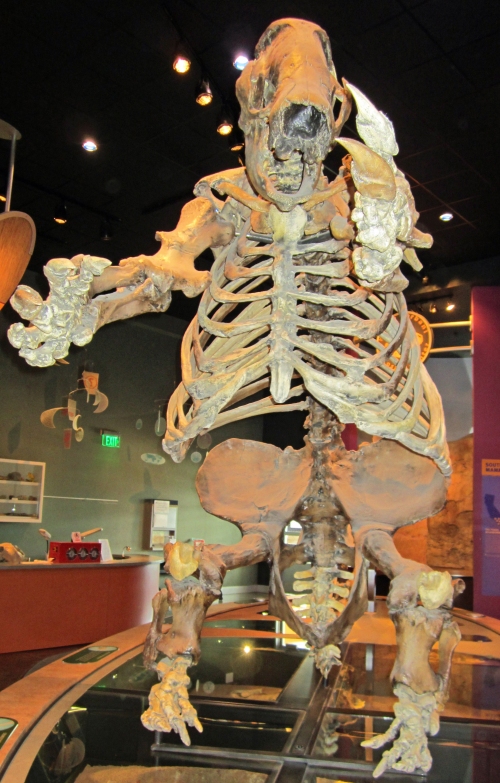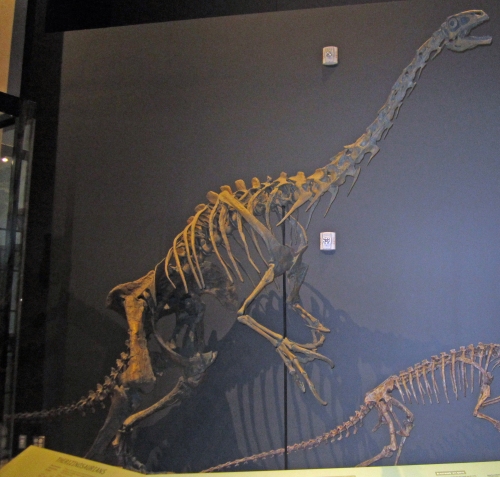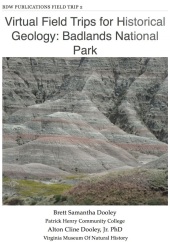 In many ways, dinosaurs and mammals are very different types of animal. And yet, there are some amazing cases of convergent evolution among them. One of the most bizarre is that of giant ground sloths and therizinosaurs. Like the little slow-moving, tree-dwelling sloths of today, giant ground sloths, like this Paramylodon mounted at Western Science Center, were herbivorous. As a group, sloths are related to armadillos and anteaters. Therizinosaurs, like this Nothronychus mounted at the Natural History Museum of Utah in Salt Lake City, are part of Maniraptora, a group of theropod dinosaurs that also includes predators like Velociraptor and our living dinosaurs, the birds. However, therizinosaurs evolved into big feathery herbivores.
In many ways, dinosaurs and mammals are very different types of animal. And yet, there are some amazing cases of convergent evolution among them. One of the most bizarre is that of giant ground sloths and therizinosaurs. Like the little slow-moving, tree-dwelling sloths of today, giant ground sloths, like this Paramylodon mounted at Western Science Center, were herbivorous. As a group, sloths are related to armadillos and anteaters. Therizinosaurs, like this Nothronychus mounted at the Natural History Museum of Utah in Salt Lake City, are part of Maniraptora, a group of theropod dinosaurs that also includes predators like Velociraptor and our living dinosaurs, the birds. However, therizinosaurs evolved into big feathery herbivores.

Despite their very different evolutionary origins, giant grounds sloths and therizinosaurs share some remarkable similarities: long arms ending in huge claws, wide bodies to accommodate a long digestive tract for processing plant matter, short robust legs, and short tails. Both groups evolved into large-bodied bipedal plant-eaters. Nothronychus was named in 2001 by my colleagues Jim Kirkland (Utah Geological Survey) and Doug Wolfe (Zuni Dinosaur Institute for Geosciences) – the name means “sloth claw”.
Another similarity is that both giant ground sloths and therizinosaurs represent migrations into North America from other places. Giant ground sloths evolved in South America and reached North America around nine million years ago. Until the discovery of 90-million-year-old Nothronychus in New Mexico, therizinosaurs were known only from fossils found in Asia. Nothronychus is closely related to the large Asian therizinosaurs and probably represents a migration event into western North America.
Post by Curator Dr. Andrew McDonald


